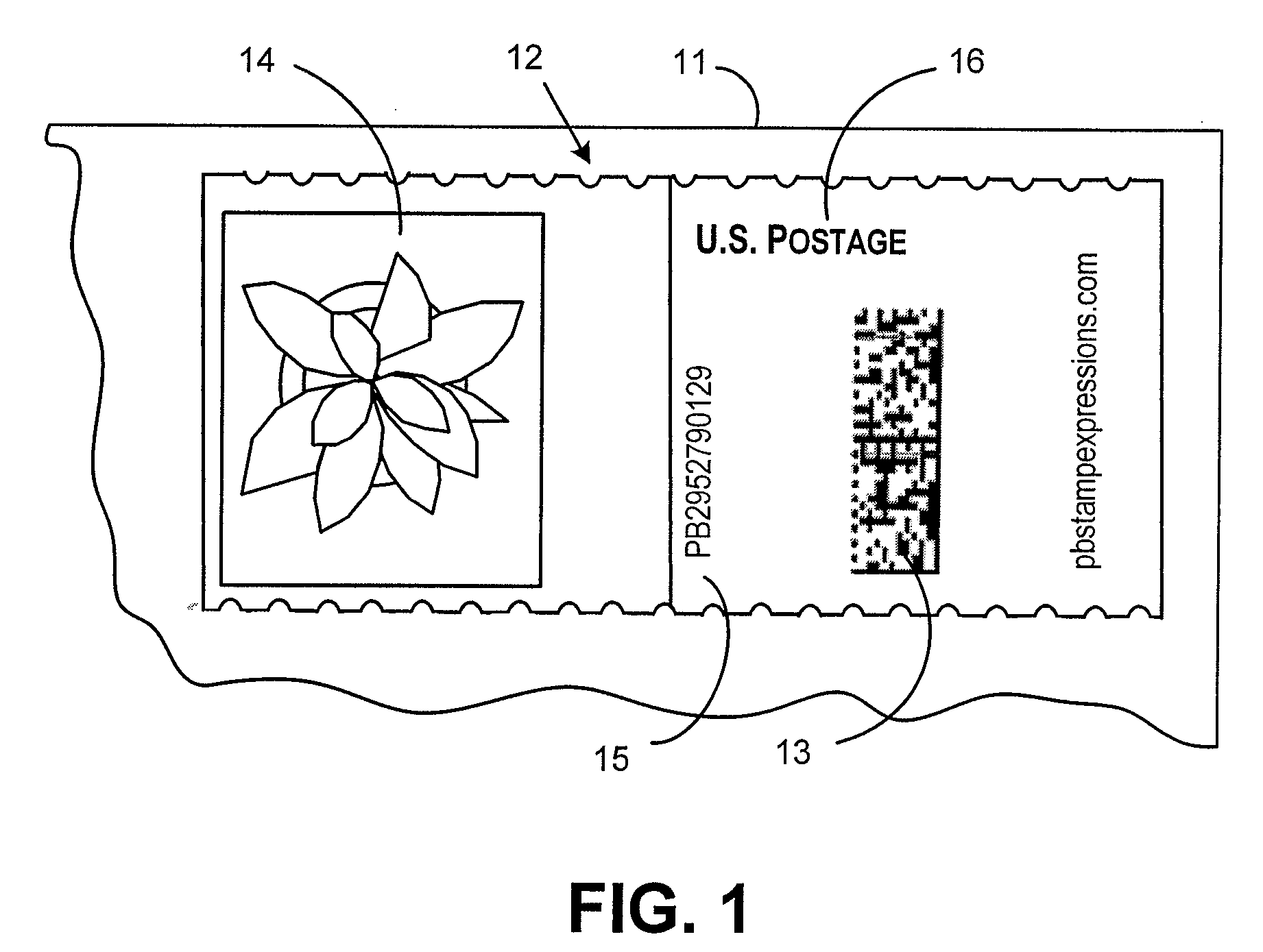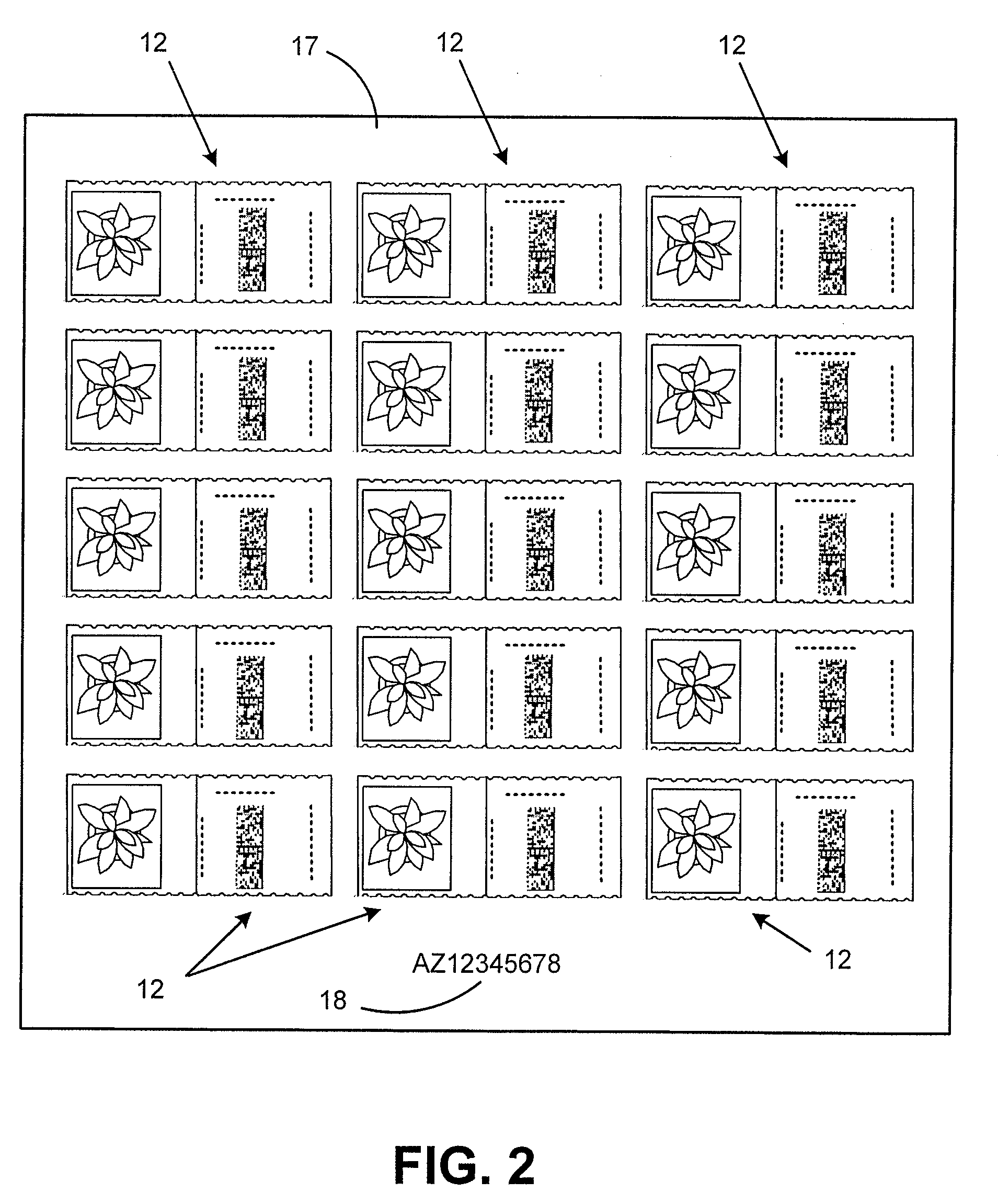Method of postal fraud detection for stamps activated at point of sale
a fraud detection and point of sale technology, applied in the field of postage stamps, can solve the problems of not being able to charge originators using originator information in an ibi, none of the above is conducive to retail sales, and less appropriate for personal mail
- Summary
- Abstract
- Description
- Claims
- Application Information
AI Technical Summary
Benefits of technology
Problems solved by technology
Method used
Image
Examples
Embodiment Construction
[0031]Referring now to the drawings in detail, and more particularly to FIG. 1, the reference character 11 represents a portion of a mailpiece, having a customized postage stamp 12 affixed thereto. Stamp 12 includes a Information Based Indicia (IBI), i.e., a two dimensional bar code 13, that uniquely identifies stamp 12, a customized stamp, i.e., a personalized picture, picture of noted personalities, natural scenes, artistic works, slogans, logos, etc. appear in area 14, a meter number 15 and the term U.S. Postage in space 16.
[0032]It would be obvious to one skilled in the art that bar code 13 may be implemented by any character string, linear barcode, 4-state barcode, steganographic mark (e.g., a watermark in an image), embedded within an RFID tag or any other symbology.
[0033]FIG. 2 is a drawing showing the customized stamp of FIG. 1, as one of a plurality of customized stamps on a sheet of stamps. Customized stamps 12 are arranged on a sheet 17 in a manner that stamps 12 may be r...
PUM
 Login to View More
Login to View More Abstract
Description
Claims
Application Information
 Login to View More
Login to View More - R&D
- Intellectual Property
- Life Sciences
- Materials
- Tech Scout
- Unparalleled Data Quality
- Higher Quality Content
- 60% Fewer Hallucinations
Browse by: Latest US Patents, China's latest patents, Technical Efficacy Thesaurus, Application Domain, Technology Topic, Popular Technical Reports.
© 2025 PatSnap. All rights reserved.Legal|Privacy policy|Modern Slavery Act Transparency Statement|Sitemap|About US| Contact US: help@patsnap.com



